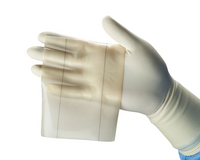
Depigmenting effect of Xanthohumol from hop extract in MNT-1 human melanoma cells and normal human melanocytes
Sign Up to like & getrecommendations! Published in 2021 at "Biochemistry and Biophysics Reports"
DOI: 10.1016/j.bbrep.2021.100955
Abstract: Xanthohumol (XH) is the most abundant prenylated flavonoid found in the hop plant (Humulus lupulus L.) and has previously been shown to have depigmenting effects in B16F10 mouse melanoma cells; however, studies of its depigmenting… read more here.
Keywords: export; mnt human; melanoma cells; human melanocytes ... See more keywords

Mannosylerythritol lipids inhibit melanogenesis via suppressing ERK‐CREB‐MiTF‐tyrosinase signalling in normal human melanocytes and a three‐dimensional human skin equivalent
Sign Up to like & getrecommendations! Published in 2019 at "Experimental Dermatology"
DOI: 10.1111/exd.13836
Abstract: Hyperpigmentation is caused by excessive production of melanin in melanocytes. Mannosylerythritol lipids (MELs) are glycolipid biosurfactants that are abundantly produced by yeasts and used commercially in cosmetics. However, the potential depigmenting efficacy of MELs has… read more here.
Keywords: skin equivalent; human skin; normal human; human melanocytes ... See more keywords

Lycium barbarum polysaccharide promotes proliferation of human melanocytes via activating the Nrf2/p62 signaling pathway by inducing autophagy in vitro.
Sign Up to like & getrecommendations! Published in 2022 at "Journal of food biochemistry"
DOI: 10.1111/jfbc.14301
Abstract: Vitiligo is a skin disease characterized by lack of functional melanocytes. Lycium barbarum polysaccharide (LBP) has been demonstrated to preserve keratinocytes and fibroblasts against oxidative stress. This study aimed to explore the efficacy and underlying… read more here.
Keywords: nrf2 p62; proliferation; human melanocytes; lycium barbarum ... See more keywords

Differential Induction of Reactive Oxygen Species and Expression of Antioxidant Enzymes in Human Melanocytes Correlate with Melanin Content: Implications on the Response to Solar UV and Melanoma Susceptibility
Sign Up to like & getrecommendations! Published in 2022 at "Antioxidants"
DOI: 10.3390/antiox11061204
Abstract: Constitutive pigmentation determines the response to sun exposure and the risk for melanoma, an oxidative stress–driven tumor. Using primary cultures of human melanocytes, we compared the effects of constitutive pigmentation on their antioxidant response to… read more here.
Keywords: reactive oxygen; human melanocytes; oxygen species; melanin ... See more keywords

BRAFV600E induces reversible mitotic arrest in human melanocytes via microRNA-mediated suppression of AURKB
Sign Up to like & getrecommendations! Published in 2021 at "eLife"
DOI: 10.7554/elife.70385
Abstract: Benign melanocytic nevi frequently emerge when an acquired BRAFV600E mutation triggers unchecked proliferation and subsequent arrest in melanocytes. Recent observations have challenged the role of oncogene-induced senescence in melanocytic nevus formation, necessitating investigations into alternative… read more here.
Keywords: aurkb; brafv600e induces; human melanocytes; proliferation ... See more keywords